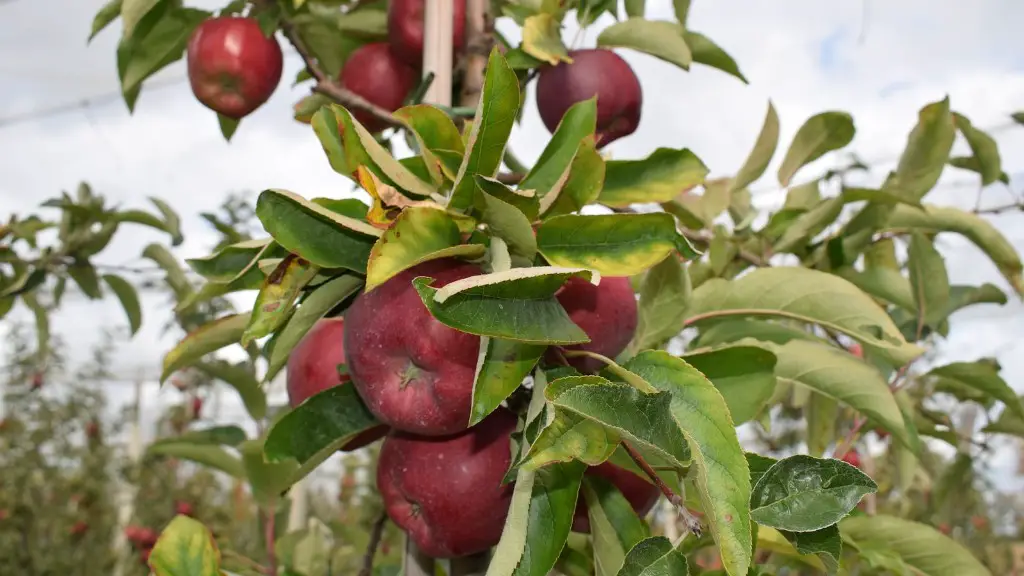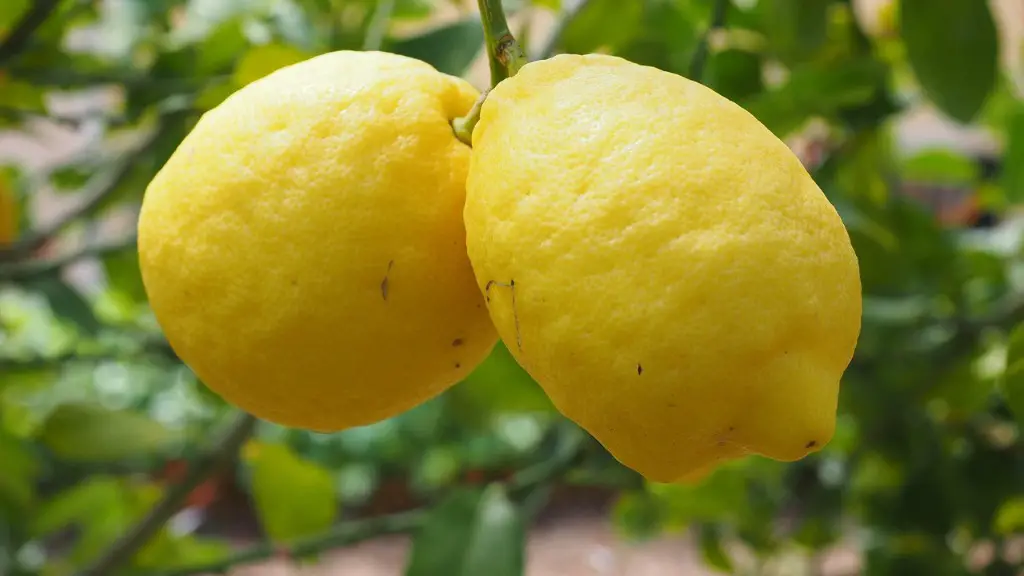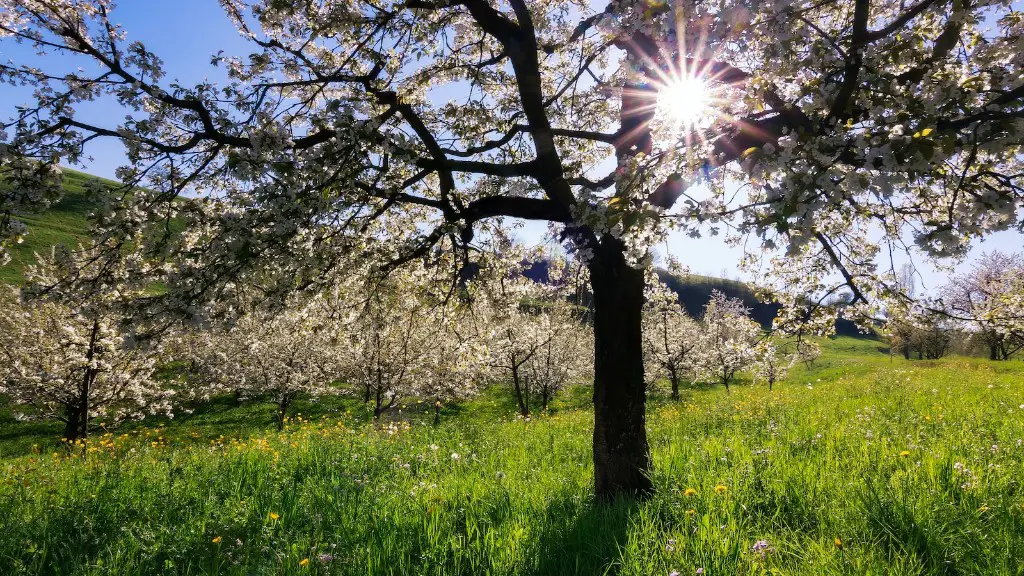The question of whether or not to prune an apple tree is a complex one; there are many factors to consider, and no single answer applies to all circumstances. Generally speaking, pruning is beneficial for the health and productivity of an apple tree. There are numerous reasons for pruning an apple tree, and the best time for pruning depends on the variety of apple tree, but typically it should be done between late winter and early summer.
During the growing season, pruning an apple tree helps to remove damaged and diseased branches, as well as water shoots. Pruning encourages the tree to produce fruit by removing overcrowding, thus providing greater light, air flow and moisture to the fruiting parts of the tree. This also makes picking of the apples easier and prevents breakage. Pruning the side shoots on the main branches results in increased size of the fruit and more evenly sized apples. Branch crotches, where two branches originate at a very narrow angle, should be cut off to reduce the chance of the branch splitting in a storm or under a heavy crop load.
When pruning, it is important to avoid removing too much wood at once. Start by removing water shoots and any vigorous upward-shooting shoots located at the base of the tree, before cutting out any older, thicker branches. The cuts should be made just beyond the branch collar, leaving no stubs. Sharp tools should be used, as ragged cuts can potentially create diseased or dead wood. All branches should be cut at a 45 degree angle away from the trunk, just outside of the branch collar, to avoid water and decay entering the trunk (see Figure 1).
Finally, prune an apple tree with the overall shape of the tree in mind. The tree should be open-centre shaped (see Figure 2), to facilitate the circulation of air through the tree and reduce disease. Pruning an apple tree requires careful thought and planning, and should also be an enjoyable experience, as it shapes our future fruit crop!
Maintenance Pruning
Pruning an apple tree encourages regular and healthy growth, allowing for maintenance pruning which can help to extend the useful life and production of the tree. This should be carried out annually, removing dead, diseased or crossing branches and reducing the size of long ones. The aim should be to achieve a conical shape, with evenly spaced branches radiating from the centre. Keep an eye out for water shoots and remove any water-sucked branches.
In the late winter, removing some of the oldest branches will help rejuvenate the tree and encourage new growth. This will improve the productivity of the tree, as younger, more vigorous branches will produce larger, more abundant fruit. It is important not to remove too much older wood, as this can weaken the overall structure and stability of the tree.
When pruning, the ‘three-year rule’ can be used as a general guide. This means that branches that are three years old or older should be removed, while any vigorous, fruit-bearing branches can be retained. The aim is to maintain the tree’s productivity without damaging its structure.
Cuts should be neat at a 45-degree angle and should be made just outside the branch collar, leaving no stubs. All cuts should be made with sharp tools for clean, precise results. Once pruned, the tree should be left to heal and close the wound naturally.
Pruning Young Apple Trees
Pruning is just as important when growing a young apple tree, as it will encourage good growth and production. It is best to wait until the tree is a couple of years old before pruning it, as cutting back the young tree too much can damage its growth.
If the tree has been planted in an open situation, then the initial pruning should focus on reducing the overall height, encouraging lateral branching and creating a conical shape. The centres of most branches should be left intact, as this stimulates growth from the lower parts of the tree.
Once the tree reaches three or four years of age, water or useless shoots can be removed and the central leader should be heavily pruned back. This will allow the side shoots to thicken and spread, forming a scaffolding for the tree. This is known as the ‘open centre’ (see Figure 3). Later pruning should be carried out to improve and maintain the structure of the tree, ensure good light penetration and encourage larger fruit sizes.
In conclusion, while pruning is necessary to improve the health, productivity and longevity of an apple tree, it should be done with care and consideration to ensure that the right cuts are made. Pruning requires an understanding of the tree’s natural form, and should be a pleasant, rewarding experience.
Encouraging Fruit Production
Pruning can have a direct effect on the fruiting of an apple tree, as it encourages larger, more abundant fruit. The ideal is to have an open canopy of evenly spaced branches with plenty of light and air movement, which facilitates pollination and fruiting. Prune off any overcrowding, remove any weak or diseased branches, and retain the strongest and most fruit producing shoots.
Water suckers, which are the sprouts that grow from the base of the tree, should be removed annually. These shoots can suck away vital nutrients and sap, and often do not contribute to the overall structure or production of the tree. Removing any lower growth below 1.5 metres in height can also help to increase air flow and reduce disease.
Pruning encourages stronger, larger shoots and branches and should be carried out annually. When young, pruning should be minimal, to form an open centre shape, while mature trees should be pruned regularly to retain their structure and produce larger fruit.
Stimulating New Growth
The removal of older shoots stimulates new growth in an apple tree, which can be beneficial for the production and overall health of the tree. Any wood that is three years of age or older can be removed as part of an annual maintenance pruning, as this allows for younger, more vibrant branches to form. The base should be kept clean, removing any water shoots and creating a solid shape for the tree.
In late winter, the removal of some of the oldest branches will help to rejuvenate the tree and encourage new growth. This will improve the production of fruit, as younger, more vigorous branches tend to produce larger, richer, high quality apples. However, be sure to avoid removing too much wood in one go, as this can place unnecessary stress on the tree.
Pruning an apple tree can be a timely process, but it is necessary to maintain a healthy and productive crop. Remember to sharpen your tools, prune with a plan, clean up after yourself, and enjoy the results of your hard work.
Improving Health and Structure
Pruning can help to remove any sick or diseased parts of the tree, as well as dead and overcrowded branches. Removing these helps to ensure proper light and movement of air throughout the tree and improve its overall health. Once cut, the wound should be left to heal itself naturally, and any prunings can be used for compost.
Stronger branches provide better support for producing fruit, and will improve the overall structure of the tree. When pruning, aim to create an open-centre or conical shape, leaving plenty of space for light to penetrate. Be mindful not to remove too much wood from the centre, as this can weaken the overall stability of the tree.
When cutting branches, the wounds should be sealed with wound dressing or paint, to prevent decay and diseases entering the tree. The cuts should be clean, just outside the branch collar, and at a 45-degree angle away from the trunk.
Pruning an apple tree is an important part of good orchard management, and can help to improve the health, productivity and longevity of the tree. Armed with the right knowledge, it can be an enjoyable task, and will certainly be rewarding when you see your apples in full bloom and ready for harvest!



